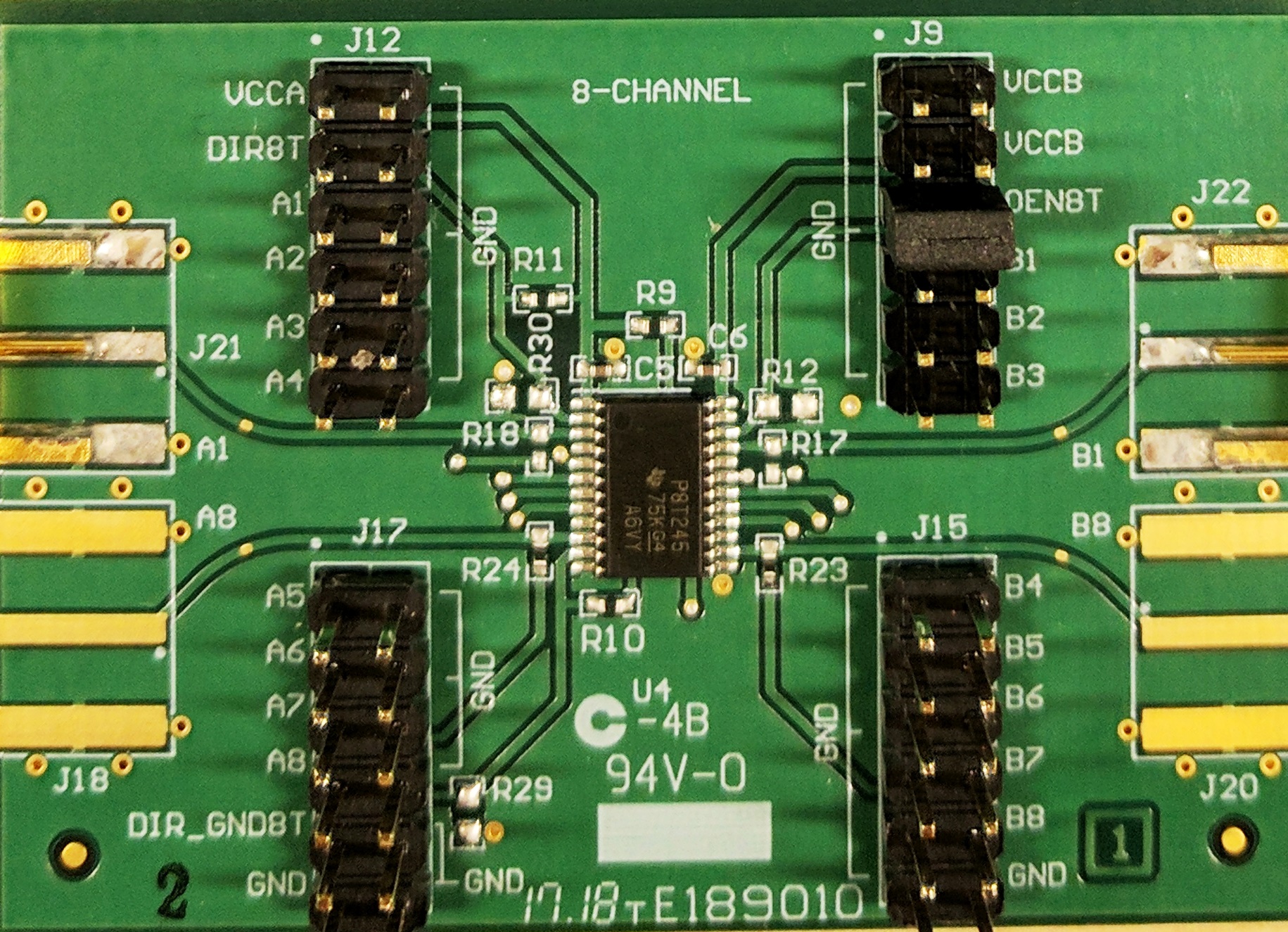SBOK061 October 2022 SN54SLC8T245-SEP
4 Irradiation Facility and Setup
The heavy ion species used for the SEE studies on this product were provided and delivered by the TAMU Cyclotron Radiation Effects Facility [3] using a superconducting cyclotron and advanced electron cyclotron resonance (ECR) ion source. Ion beams are delivered with high uniformity over a 1-inch diameter circular cross sectional area for the in-air station. Uniformity is achieved by means of magnetic defocusing. The intensity of the beam is regulated over a broad range spanning several orders of magnitude. For the bulk of these studies, ion fluxes between 105 and 104 ions/s-cm2 were used to provide heavy ion fluences between 106 and 107 ions/cm2. For these experiments Silver (Ag) ions were used. Ion beam uniformity for all tests was in the range of 97% to 99%.
Figure 4-1 shows the top side of the SN54SLC8T245 test board used for the experiments at the TAMU facility. The board was configured using jumpers to achieve the bias diagrams outlined in Section 3. Although not visible in this photo, the beam port has a 1-mil Aramica window to allow in-air testing while maintaining the vacuum within the accelerator with only minor ion energy loss. All through-hole test points were soldered backwards for easy access of the signals while having enough room to change the angle of incidence and maintaining the 40-mm distance to the die. The in-air gap between the device and the ion beam port window was maintained at 40 mm for all runs.
 Figure 4-1 SN54SLC8T245-SEP Board (Top View)
Figure 4-1 SN54SLC8T245-SEP Board (Top View)